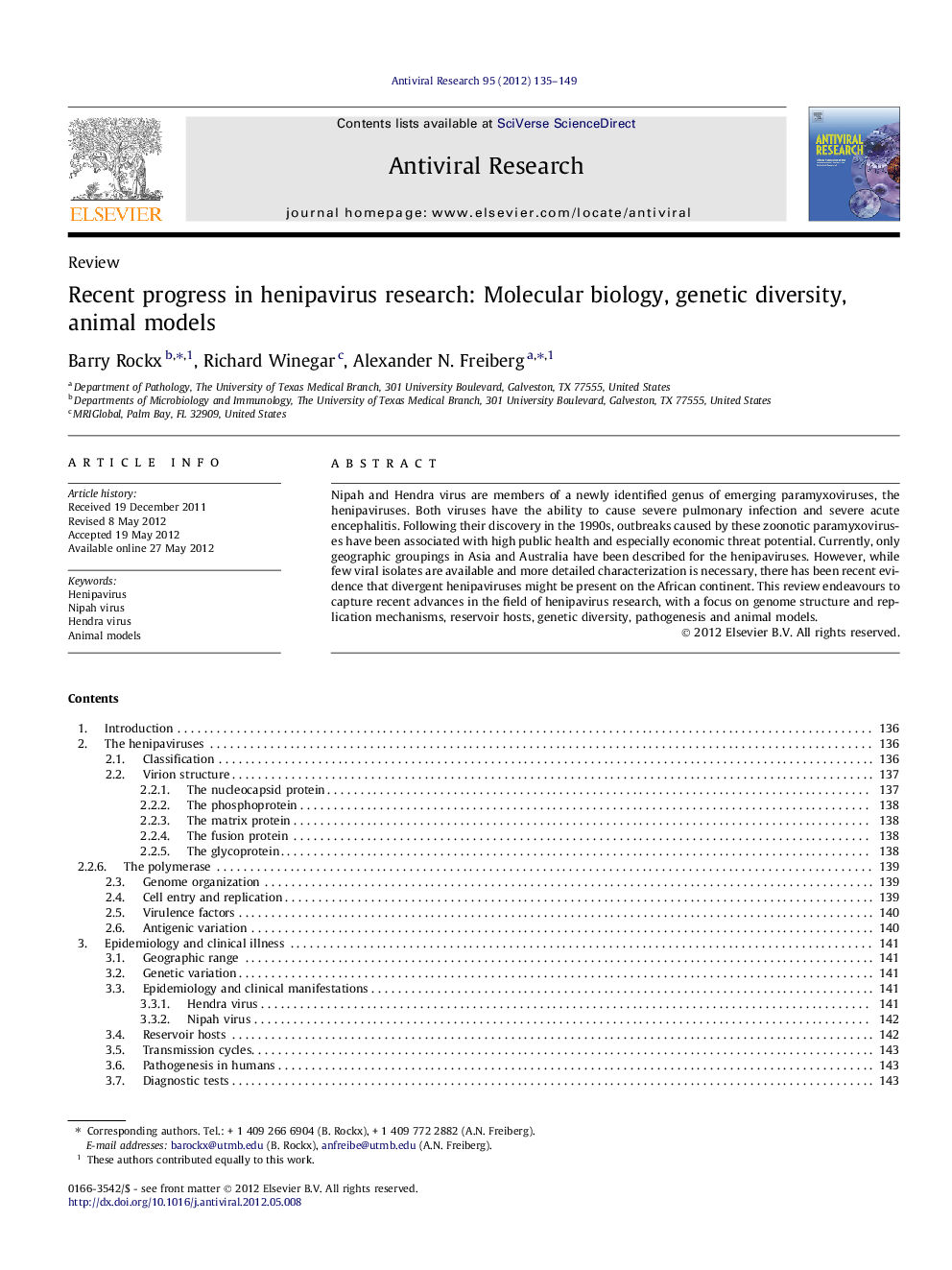| Article ID | Journal | Published Year | Pages | File Type |
|---|---|---|---|---|
| 2510095 | Antiviral Research | 2012 | 15 Pages |
Nipah and Hendra virus are members of a newly identified genus of emerging paramyxoviruses, the henipaviruses. Both viruses have the ability to cause severe pulmonary infection and severe acute encephalitis. Following their discovery in the 1990s, outbreaks caused by these zoonotic paramyxoviruses have been associated with high public health and especially economic threat potential. Currently, only geographic groupings in Asia and Australia have been described for the henipaviruses. However, while few viral isolates are available and more detailed characterization is necessary, there has been recent evidence that divergent henipaviruses might be present on the African continent. This review endeavours to capture recent advances in the field of henipavirus research, with a focus on genome structure and replication mechanisms, reservoir hosts, genetic diversity, pathogenesis and animal models.
► Henipaviruses are emerging zoonotic paramyxoviruses and potential bioterrorism agents. ► Nipah and Hendra viruses cause fatal encephalitis and/or respiratory disease. ► Fruit bats are the natural reservoir and recent studies suggest that the henipaviruses originate from Africa. ► Data on mutation rates and genetic diversity are summarized and discussed.
